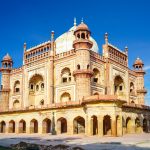Table of Contents
After spending a month exploring every accessible temple in the Angkor Archaeological Park, I’ve discovered the secrets to experiencing these ruins beyond the typical tourist rush. Forget the standard one-day temple checklist – here’s how to truly explore the ancient ruins of Angkor, one of humanity’s greatest architectural achievements.
The Timing Strategy
Everyone visits Angkor Wat at sunrise. Instead, head to the lesser-known temples at dawn. While tourists crowd the reflecting pools at Angkor Wat, I had Ta Prohm completely to myself at 6 AM. The light is just as magical, and the experience is infinitely more personal. Save Angkor Wat for late afternoon when the crowds thin and the light turns golden.
The Circuit Hack
The standard “Small Circuit” and “Grand Circuit” are tourist constructs. Break free from these prescribed routes. The best strategy? Focus on one area per day, exploring both major temples and their smaller, often overlooked neighbors. When I spent an entire morning around Ta Som, I discovered hidden carvings and quiet corners that tour groups never see.
The Temple Town Secrets
Lesser-known temples often tell more interesting stories. Preah Khan was a complete city, with universities and hospitals. Banteay Srei shows the finest carvings in all of Angkor. Ta Nei sits alone in the jungle, often completely deserted. These sites reveal Angkor’s true scale and sophistication.
The Photography Windows
Each temple has optimal photography hours that most visitors miss. Bayon’s faces look most dramatic in the early morning light. Ta Prohm’s tree roots are best photographed in the late afternoon when sunbeams pierce the canopy. Pre Rup offers the park’s best sunset without the Phnom Bakheng crowds.
The Season Strategy
The wet season transforms Angkor. Moats fill, vegetation turns vibrant green, and visitor numbers drop significantly. Yes, you’ll need rain gear, but watching storms roll over ancient stones creates unforgettable memories. The light after rain makes for exceptional photography.
The Local Guide Reality
Not all guides are created equal. Skip the front-gate touts and seek guides with archaeological knowledge. I found mine through a local university – he was an archaeology student who shared insights about recent discoveries and ongoing research. The extra cost for expertise is worth every dollar.
The Transport Choice
Tuk-tuks are classic, but consider alternatives. Bicycle access lets you explore at your own pace and reach remote temples easily. Electric bikes offer similar freedom with less effort. For far-flung temples like Banteay Srei, hire a car with AC – the midday heat is brutal.
The Hidden Passages
Many temples have lesser-known access points that completely transform your experience. At Angkor Wat, while tourists crowd the main causeway, a quiet side entrance through the east gate offers a peaceful approach through forest paths. This route not only provides unique photo opportunities but often leads to sections of the temple where you’ll find monks going about their daily rituals.
Ta Prohm has several wall openings that tour groups never use – I discovered one that leads to a hidden courtyard with remarkable carvings of celestial dancers. At Preah Khan, following the outer wall clockwise reveals small doorways into satellite temples that most visitors miss entirely. Even popular Bayon has lesser-used stairways that access upper terraces with spectacular views of the face towers. The key is arriving early enough to safely explore these passages before the heat and crowds arrive.
The Conservation Understanding
Understanding ongoing restoration work adds a fascinating layer to your visit. Different countries sponsor different temples’ conservation efforts, each bringing their philosophy and techniques. The Japanese team at Bayon focuses on minimal intervention, while the Indian team at Ta Prohm works to balance preservation with maintaining the atmospheric fusion of nature and architecture.
At Preah Khan, you can often watch conservators at work early in the morning, piecing together fallen stones like massive jigsaw puzzles. I spent several mornings observing the German team’s documentation process, learning how they use 3D scanning to record every block’s original position. These international efforts reveal just how complex it is to preserve these ancient structures while making them safely accessible to visitors.
The Off-Hours Experience
The magic of Angkor reveals itself during unconventional hours. While most visitors structure their days around sunrise at Angkor Wat and sunset at Phnom Bakheng, the real treasures appear during the quiet hours in between. Between 11 AM and 2 PM, when most tour groups retreat to Siem Reap for lunch, even the most popular temples become peaceful sanctuaries.
I discovered that many temples take on different characters throughout the day. Preah Khan’s long corridors create stunning light shafts around 3 PM. Ta Keo’s steep stairs are most manageable in the early morning when the stone is cool. The Terrace of the Elephants offers incredible photography opportunities during the “golden hour” before sunset, but most people miss it while queueing for the crowded sunset spots.
Learning to read the rhythms of different temples – when tour buses arrive, when locals come to pray when the light is best for photography – transforms your entire Angkor experience. Some of my most memorable moments came from simply sitting in a quiet corner of a lesser-known temple during off-hours, listening to the jungle sounds and
The Sacred Space Protocol
These aren’t just tourist sites – many temples remain active religious spaces. Proper dress is essential (shoulders and knees covered), but so is proper behavior. Observe local worshippers’ practices. Some of my most meaningful moments came from quiet dawn visits when monks still use the temples for meditation.
The Historical Context
Each temple tells part of a larger story. The shift from Hinduism to Buddhism is visible in modified carvings. Architecture evolved from simple designs to complex structures. Understanding basic Khmer history transforms random ruins into a coherent narrative of empire and religion.
The Weather Wisdom
Angkor’s climate requires strategy. Carry twice as much water as you think you need. Plan indoor temple exploration during peak heat (11 AM-2 PM). Use morning hours for exposed temples. I learned to read cloud patterns – afternoon storms often follow predictable patterns.
The Local Connection
Build relationships with tuk-tuk drivers and local guides. They know when ceremonies happen at different temples, which areas are under restoration, and how to avoid tour bus schedules. My regular driver became a friend who introduced me to temples I’d never have found in guidebooks.
Making It Work
Exploring Angkor isn’t about racing between major temples – it’s about discovering the civilization’s full scope. Take your time, respect the spaces, and remember that every temple holds secrets for those patient enough to find them. Ready to discover the real Angkor beyond the postcards?

I’m Garrett, a seasoned photojournalist with a passion for uncovering the world’s hidden treasures. My journey is fueled by a deep curiosity for diverse cultures and breathtaking landscapes. When I’m not behind the lens capturing the world’s wonders, you can find me exploring underwater realms or sharing my passion for discovery with my two adventurous children.




